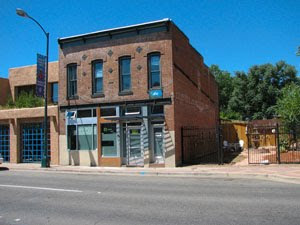Imagine walking into a significant business meeting appearing like you simply dragged yourself straight from bed. You would be unlikely to produce a good impression and waste your time of securing the job.
The same thing goes for selling a house. First impressions are lasting. Some buyers won't even consider many homes that don't have good roadside charm.
Today's buyers are very picky. There isn't any sense of urgency in the current market, so buyers are taking time to find the best home possible, which will last them for many years to come. In certain areas, there are far to many homes for sale, so you need to be sure that buyers are going to be drawn to your property before they even walk-up to the front door.
Fortunately, exterior improvements needn't be costly. The recent Remodeling Cost vs. Value Report 2010-2011 discovered that the improvements that yielded the greatest return around the investment when sold were a brand new steel door plus a new garage door.
The common cost nationally to get a new door was $1,218; the return was 102 percent. The common cost to get a new garage door was $1,191; the return was 83.9 percent. The most notable nine of 10 most cost-effective improvements nationally were for exterior projects. Exterior charm can be as significant as ever, and may even be so within this market.
The Remodeling Cost vs. Value Report is a collaborative report done annually by Remodeling Magazine and the National Association of Realtors. It compares construction costs with resale values, which can be according to estimates from a lot more than 3,000 Realtors and appraisers.
Beautifying your front yard doesn't need to cost much. Cleanse weeds and dead plants. Add flowering plants for color and mulch to tidy up areas which are not heavily planted. Replace a lawn which may have seen better days with less lawn along with a border bed of flowering shrubs. Do in-ground planting well ahead of time, if at all possible, This way plants have the time to get established before your property enters the marketplace.
A deteriorated fence needs to be removed, repainted, repaired or replaced. Any peeling paint near the front walk, house exterior and trim needs to be refreshed. The side of your home that provides the most weather exposure usually needs more maintenance. If you have ignored it, you will end up deducting dollars from the sale price. You should repaint where needed, prior to selling.
The quantity returned on do-it-yourself investments differs from one location to another. It is critical to check with your local real estate broker before you start an upgrade project to make certain that you don't over-do an improvement that won't return on the investment.
Most homeowners assume they'll manage to get thier money-back and much more once they sell. Actually, most upgrade investments often don't return 100 % from the amount invested, specifically in a down market.
A small mid-range kitchen remodel returns 72.8 percent nationally, based on the 2010-11 Remodeling Cost vs. Value Index. Inside the Pacific region from the U.S., you likely will recoup 84.1 %.
However, an important upscale kitchen remodel pays back only 59.7 percent nationally and 66 percent inside the Pacific region. The only sensible argument against an important remodel project is when you're residing in your home and you will benefit from the improvements before selling.
Patio decking addition ranked good from a list of popular exterior improvements. Although, nationally the price recouped is merely 72.8 percent, it could be a vital enhancement if your home does not have any outdoor liveable space and many homes inside your neighborhood do.
Always remember that the supply and demand of like properties which are nearer to your home will impact just how much you'll recoup out of your fix-up investments.








 4:17 PM
4:17 PM
 Cygnus Real Estate
Cygnus Real Estate




